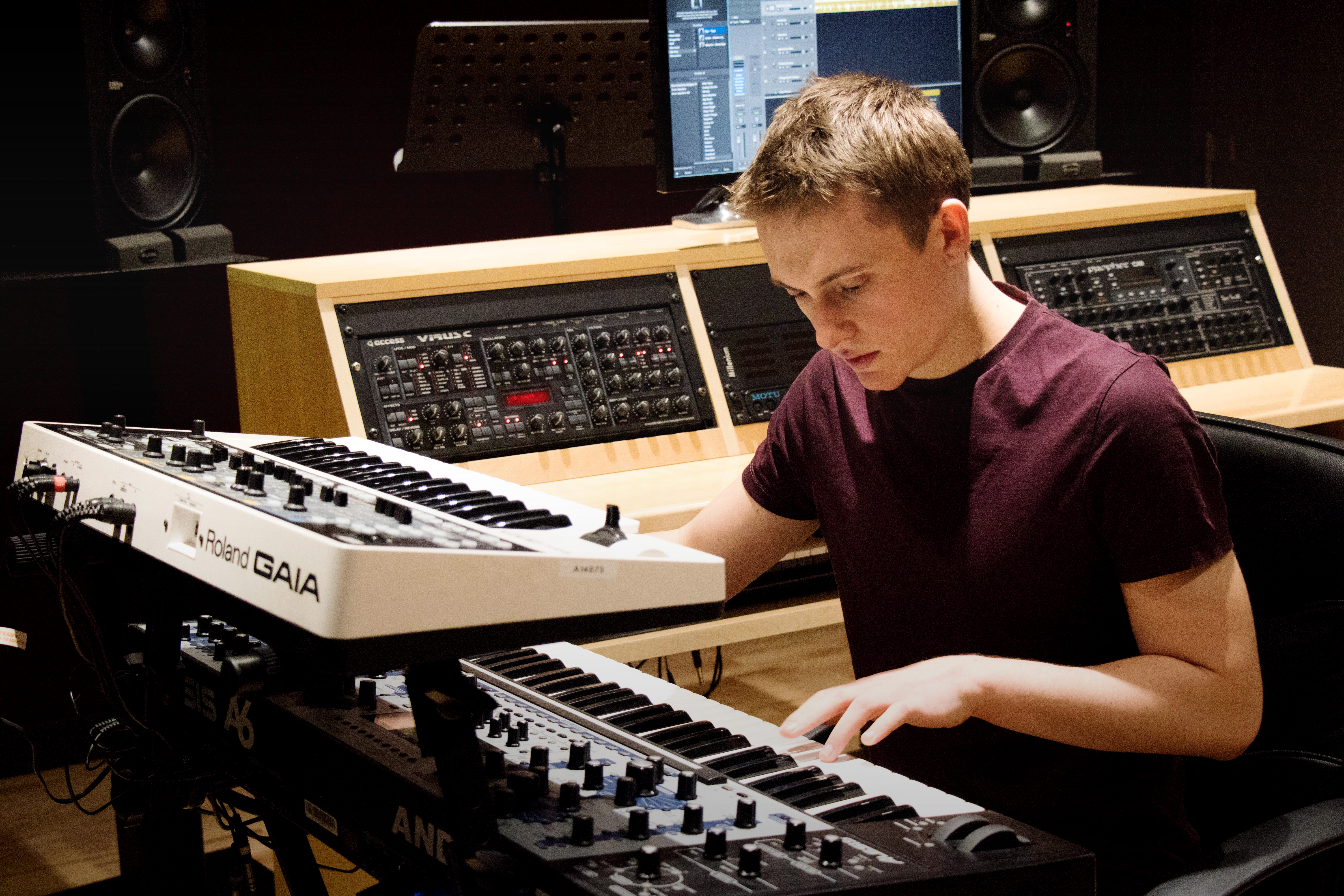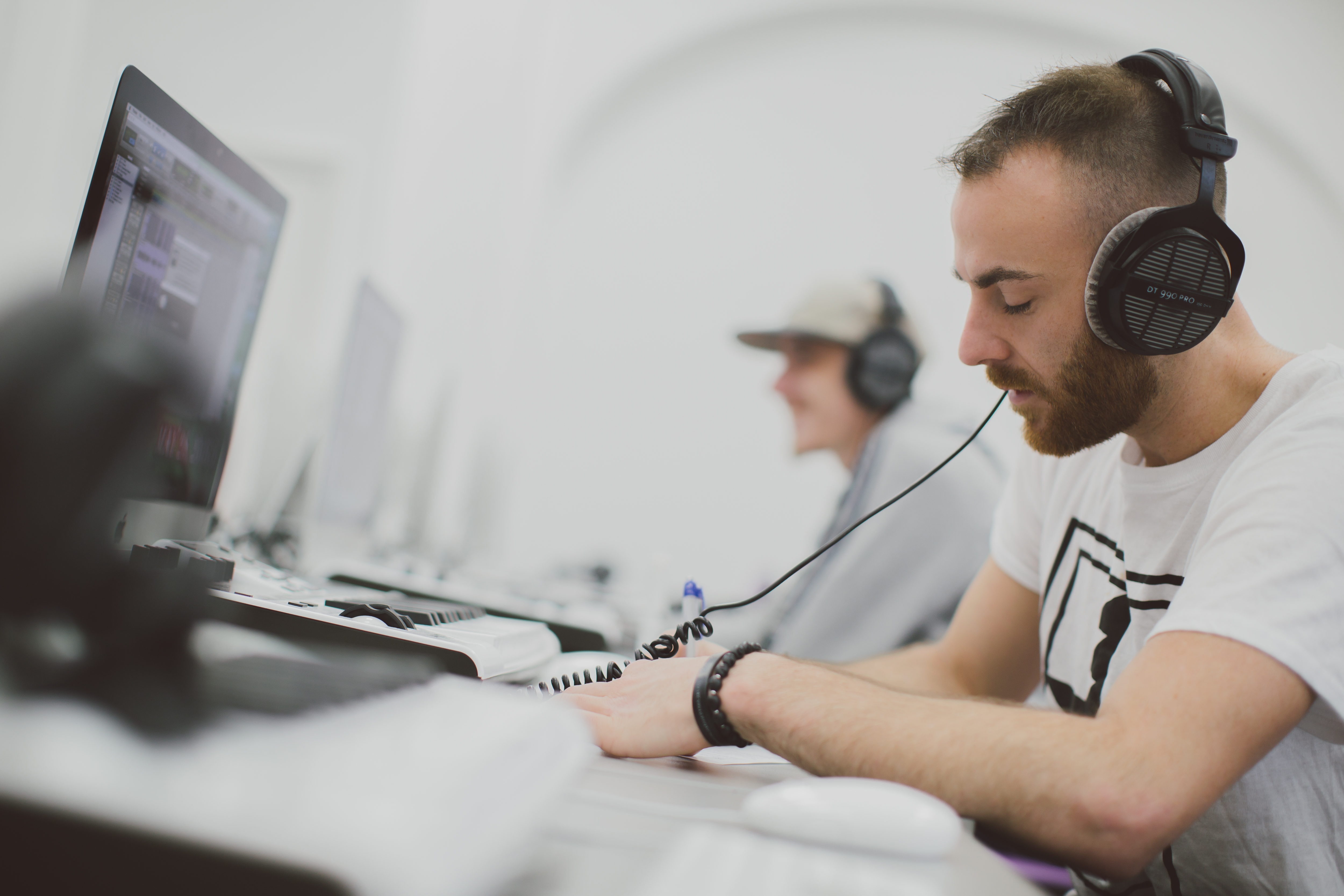Five tips for starting to make a track
Starting is the hardest part, advises SAE Institute instructor Rob Finder. But making a track doesn't have to be difficult.

What’s the hardest part of making a track? Starting. If, like me, you have ever opened up a new session in your DAW (Digital Audio Workstation) of choice and stared at it, waiting for the good ideas to come, this post might help you overcome this creative hurdle.
1) Play
Far too often, creative types begin a new track thinking that it will be the best thing they have ever made. It will be “the one” — that gets them signed, gets them all the likes, the one that people remember. That’s a lot of self-inflicted pressure for someone to deal with when they’re staring at a virtual blank canvas.
Let’s remember to play. Play like it doesn’t matter. Play badly, play well. Just play. Press the keys, turn the dials, tap the pads. Play with no goal in mind. Play for the sake of playing.
We learn through playing.
2) Make Mistakes
I always tell my students that their first draft is never a final draft.
I also tell them that if they are going to fail, fail spectacularly.
Make your track sound bad, and work out why it sounds bad. Then, make it sound good. As good as you can make it.
We learn through mistakes. Making mistakes is crucial to the creative process. Thomas Edison famously made 10,000 ‘failures’ before successfully inventing the light bulb. We need to look at music making the same way; each mistake we make is not a failure, it is a stepping-stone to a success, and how you define that success is completely up to you.

3) Stop Making Music
This may seem like a contradiction in a post from a creative media insitute for ROLI, but sometimes, it’s best to stop. Don’t force it. If an idea isn’t coming together, if you dislike what you’re hearing, stop. Throwing more aural paint at the sonic wall may not lead to good things (unless you’re the musical equivalent of Jackson Pollock).
The best ideas do not always come from DAWs or from the tools we use to make music. Relying upon our software, our instruments and our tools to dictate to us how our music should sound is prescriptive and restrictive. Your music will sound the same as everyone else’s if you work this way.
Read a book. Watch a film. You could even go outside for a little while!
Have an idea in before you start. DAWs, instruments and devices exist to facilitate our creativity, not to dictate it.
I have a self-imposed three-day rule. I’ll work on something really intensely, and then leave it alone. I’ll listen to it again in three days’ time. This allows me to be more objective and critical of my work as though I’m listening to someone else’s track. If it’s still good, I’ll keep going with it, if it’s not, I’ll rework it, or take the good bits from it, or scrap it altogether (remember what I said about mistakes and failures?)
Another workaround to this problem is to work on more than one track at the same time. Rather than trying to get all your ideas into one track, and having a patchwork of ideas squeezed into one, trying starting a few different tracks, each one exploring different ideas.

4) Limit your tools, and know them well
Speaking of restrictions, know that more is not more.
You do not need every software synthesiser ever made to make music. Consider that in the good ol’ days, synthesisers were analogue pieces of hardware. The luxury of having multiple synths and samplers for your bass, lead, drums, and pads was not yet available.
Choose your tools, and know them inside and out. Learn your synth like a violinist knows their violin or a singer knows their voice.
That is the strength of your own work. How do you use what you’ve got? What do you do with what you know?
5) Know When It Is Finished
This is something that I think every creative person struggles with. I can’t count how many times I’ve heard “it’s not quite finished”. I’m the same. There’s always something else that I can do to the track; the snare could be snappier, the bass a little fatter, the vocals a little more tuned (ahem).
All those things could be done to the track, but then you end up with a whole bunch of tracks sitting on your machine that “aren’t quite finished” and that no one ever hears. Give yourself a deadline and set yourself goals.
Know that the track might not be perfect, but that it is finished. It is what you can do now, and there’s always the next one.
So, what are you going to make?
At SAE Institute we provide the opportunity to improve your practical skills through degrees in a range of creative media disciplines. We have four campuses in the UK and many others all over the world. Our Bachelor of Arts/Bachelor of Science, Audio Production, and our short courses in Electronic Music Production allow students to learn through making music.
To learn more, visit www.sae.edu
Rob Finder is the Academic Coordinator at SAE Institute Oxford, and produces music as Vaein.
Join the ROLI community